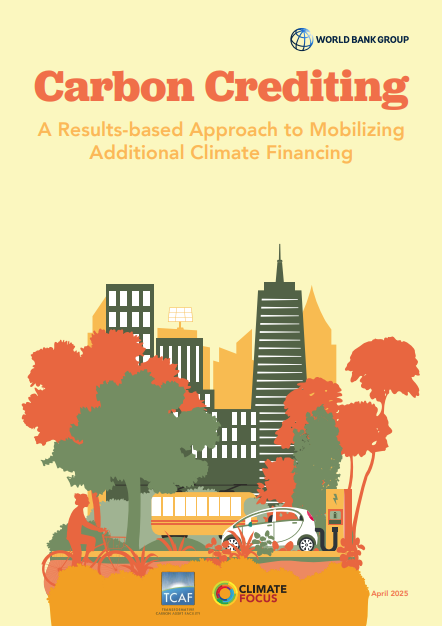By: Klaus Oppermann, World Bank Senior Economist; Joseph Dickmann, World Bank Senior Climate Change Specialist; Kym Smithies, World Bank Senior External Affairs Officer
A new World Bank report, Carbon Crediting: A Results-based Approach to Mobilizing Additional Climate Financing, sheds light on how different carbon crediting approaches can help countries fund their climate and development goals. As traditional sources of development assistance face growing constraints, carbon crediting is emerging as a promising tool for unlocking debt-neutral financing—supporting countries to cut emissions while strengthening long-term development and resilience.
The report explores the full range of crediting options—from project-based efforts to innovative policy and jurisdictional approaches—and offers practical guidance on how each model works, where it applies, and what challenges it may involve. Whether focused on specific mitigation activities or broader policy reforms, the report helps practitioners and policymakers determine the most effective crediting strategy for their goals.
With clear examples and a comparison of each approach, the report provides a practical guide to the strengths, challenges, and applications of carbon crediting.
- In Rwanda, a programmatic crediting program is expected to help about 200,000 households to gain access to clean cooking solutions.
- In Uzbekistan, a policy crediting program supports the phase-out of harmful energy subsidies. The reform is expected to create up to 2.7 million jobs, improve social security for 3 million households, save more than $20 billion, and spur renewable energy and energy savings.
- In Ghana, a jurisdictional crediting initiative promotes sustainable cocoa farming and better landscape management, improving farmer livelihoods while reducing deforestation.
Together, these large-scale programs could reduce carbon dioxide emissions by up to 13 million tons annually—equivalent to the emissions of around 3 million gasoline-powered cars.
The report also examines how crediting can incentivize a wide range of activities—from landfill gas capture to forest conservation—helping bridge the financing gap for climate-smart development. By aligning carbon finance with national climate strategies and sectoral reforms, countries can unlock new sources of revenue and accelerate progress toward their emissions targets.
As the carbon crediting landscape continues to evolve, this report offers timely insights for implementers, policymakers, and development partners looking to integrate carbon finance into broader climate and development strategies. Developed with support from the World Bank’s Transformative Carbon Asset Facility (TCAF), the report draws on years of experience in results-based climate finance and highlights how well-designed crediting programs can deliver verified emissions reductions alongside long-term benefits for local economies and communities.
Click here to download the report.

